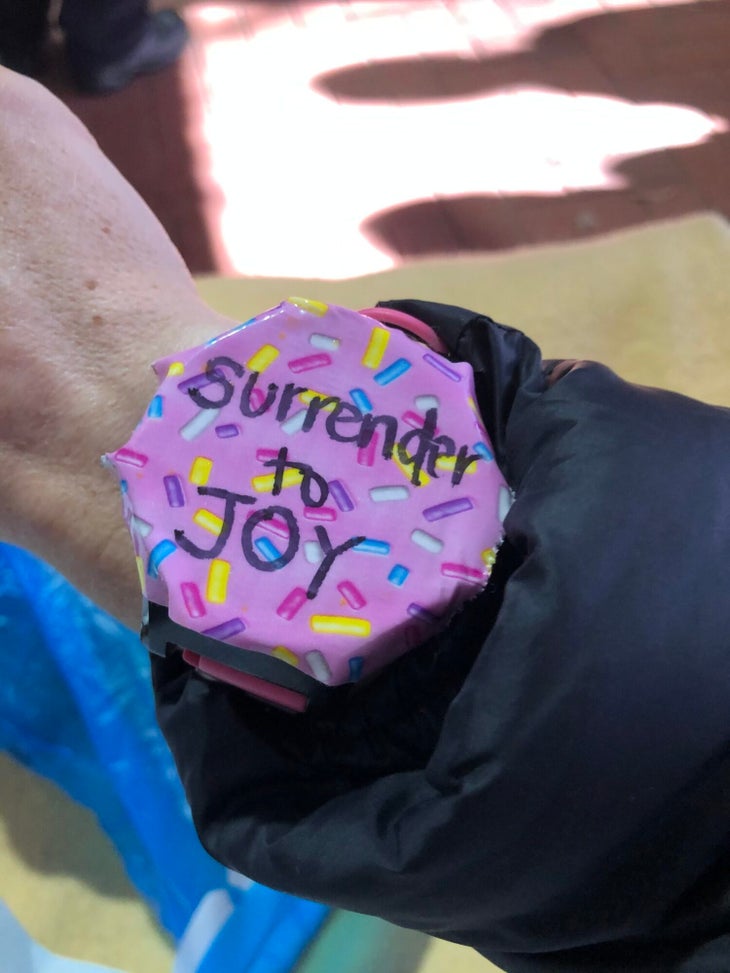Products You May Like
Get access to everything we publish when you
sign up for Outside+.
What do a 6-minute mile and a 12-minute mile have in common? It’s the same distance.
As a new runner, it’s intimidating to head out and start logging miles, whether you run solo or in a group. So many runners have gizmos and gadgets that keep track of their heart rate, calories, miles, and pace, not to mention runners who wear the latest compression sleeves, tights, or shoes. They talk about splits and intervals and thresholds. It’s confusing to know what is important. But most confusing of all is knowing how fast, or what pace, you should be running.
But there are tricks to help you find your right pace. We spoke to coach Jenni Nettik of Mercuria Running to pass along a few secrets to help you run at a level that is right for you and will help you develop your running abilities. Before you know it, you’ll be passing other runners.
Run By Effort Not By Pace

While this is sound advice for beginner runners, Nettik actually believes that all runners (even elites) should train by effort rather than pace.
New runners should focus on completing their run at a comfortable effort. If breathing is too heavy to converse with a friend while running, then slow the pace down. “The most common mistake that many runners make is running easy runs too fast,” says Nettik.
RELATED: 360 YOU Offers Mindset and Run Coaching to O+ Members
Running alone? Talk to yourself or try to sing a few lines. Back off whenever your breathing gets ragged, when you feel “out of breath” and anxious for the run to stop.
As a new runner, you’ll want to spend your time running getting to know your body better and listening to its cues. This will come in handy as you become more advanced. Soon you’ll start to understand that how you fast you run is determined by a number of variables in your life. “It’s common for easy run paces to vary by 60-90 seconds depending on factors like: previous day’s workout, sleep quality, life stress, heat, hydration, fueling, terrain etc.,” says Nettik.
If you’re still curious about pace, consider wearing a watch or fitness tracker, but Nettik recommends hiding the pace and viewing the data afterwards. “One trick that has been helpful for many of our runners is to tape a mantra over the watch face so when they glance down they see something positive like, ‘Let Go,’ ‘Surrender to joy,’ ‘Be,’ or ‘Smile.’”
Use Time, Not Miles
New runners might benefit from focusing on the amount of time they spend running versus aiming for distance. With each run, you’ll notice that time span gets a little easier, because you’re building your endurance and cardiovascular health. Your pace will drop naturally and you’ll run more miles. Maybe the first time you will only be able to get a couple miles in, but over time you’ll gradually notice 2 miles turns into 2.5, then 3, and so on.
If you’re not focused on pace, Nettik notes there are other ways to measure your improvement:
- Breathing is smoother.
- It’s easier to run longer.
- Body gets less sore after a run.
- Form cues take less concentration.
- Run/walk ratio increases.
- Running uphill feels easier.
- Easy effort yields a faster pace (avoid looking at pace until after a run).
Use a Run/Walk Approach
A walk is defined as always having one foot on the ground at all times. A comfortably fast walk is around 15 minutes per mile. You don’t need to break into a run until you’re going faster than 15 minutes per mile. A new runner can shoot for 12 to 13 minute pace per mile as a good range to start off with, with walk breaks structured in.
RELATED: Is Stretching Good or Bad? A Comprehensive Look
Start with a 3-minute run, then walk for 1 minute to recover. This will help you keep your breathing in check and heart rate up. Continue this pattern for the time you allotted to run. Do this for a week or two until it feels comfortable. Then aim for 4-minute runs and 1-minute walks. Continue this pattern as you gain more endurance strength.
If you can’t sustain the amount of time you’ve set out to run, you’re probably running too fast. “Speed is a combination of cadence (the number of steps per minute) and stride length,” says Nettik. Try making your steps smaller to get down to an easier pace, she suggests. “Tiny little steps makes running feel easier!”
Bottom Line: Listen To Your Body
If you think you are running too fast, you probably are. Your body will tell when it’s time to back off. Don’t try to push yourself too hard, too often. If you do, you’ll risk injury.
Trust that, by listening to your body, you will begin to see improvements in your running in a sustainable way.
RELATED: 10 of the Worst Training Tips You Hear in Running
